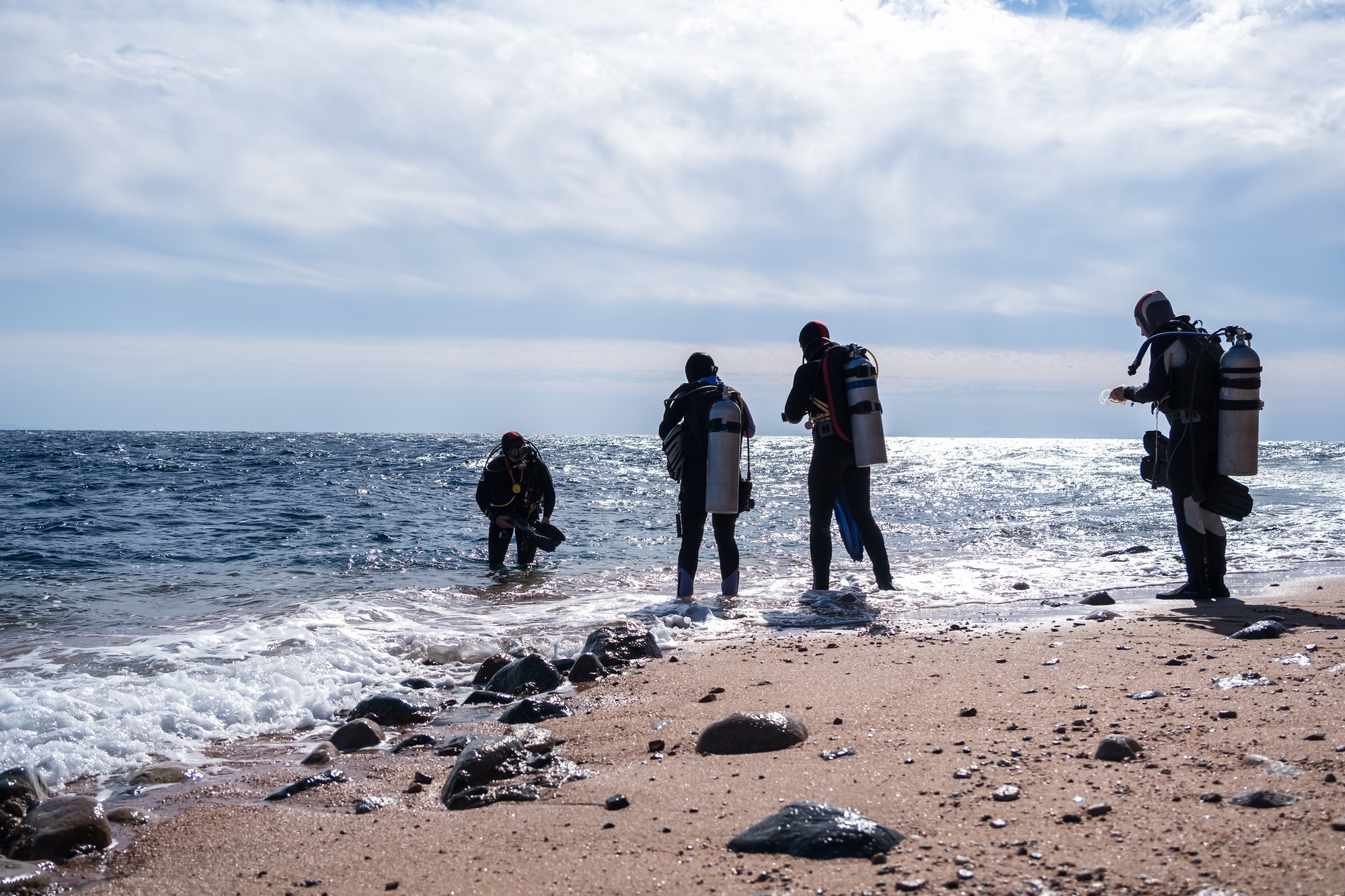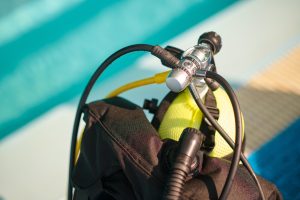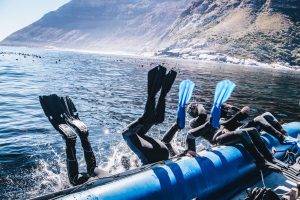
A scuba diver’s gear is made to get wet, so keeping it clean and in top shape is important. That means cleaning it after every dive, rinsing it thoroughly and storing it properly so that it is ready to use when you need it.
Regular cleaning and rinsing is key to the life of your scuba diving gear, particularly in salt water. Salt can cause corrosion in metals, which can result in weakening and disintegration of your equipment.
Clean It
Whether you’re diving in the ocean, fresh water springs or even swimming pools, scuba gear is a great way to get into the underwater world. But as much as we love to use our gear, we need to keep it in good shape to ensure it keeps functioning properly.
After every dive, rinse your gear thoroughly to remove salt and other debris that can be harmful to the equipment’s internal parts. You can do this with a water hose, a spray bottle or by dunking the gear into a tub of freshwater and leaving it for about an hour (or longer if necessary).
When cleaning, you need to make sure you use only products that are specifically designed for scuba equipment. This includes cleaning solutions, anti-bacterial and odor eliminating agents.
Rinsing your neoprene items like wetsuits, boots and dive bags with fresh water after each dive will help them maintain their flexibility and prevent the buildup of salt and other contaminants. It will also help keep them smelling fresher.
Your regulator should also be rubbed down in freshwater after each dive to remove dirt and sand that can damage it. You can do this with a spray bottle or by dunking it into a tub of freshwater and leaving for about an hour (or longer if needed).
If your regulator has a quick-disconnect hose fitting, you need to make sure it’s clean too. This is because if it gets dirty, the low-pressure hose will be difficult to disconnect from the BCD’s internal bladder.
You can do this with a spray bottle and a solution of about a quarter cup of household bleach per gallon of water. The CDC recommends using this solution as a quick and effective disinfectant for hard, nonporous surfaces.
Then, rinse all of the gear with freshwater and set it aside to dry. If you’re renting your scuba gear, ask about their cleaning and disinfection procedures.
Your scuba mask and snorkel should also be cleaned before use to prevent bacteria from developing in the skirt. For the mask, baby shampoo works well.
Rinse It
Your scuba diving gear is your life support equipment when you dive, so it’s important to keep it in good shape. Rinsing your scuba diving gear after each use is one of the most important steps in maintaining it.
It’s also essential to rinse all of your scuba diving gear before storing it. This is not just for safety reasons, but it will help your dive equipment last longer.
When rinsing your scuba diving gear, it’s important to use fresh water, not tap or swimming pool water. This helps prevent corrosion that can occur on metals when they come into contact with saltwater. It’s also a good idea to use a mild soap designed specifically for scuba gear, as other cleaners may degrade your dive equipment or damage it in some way.
Another reason to rinse your scuba diving gear is to remove any debris that might be left behind during your dive, such as shells and small rocks. This can cause your scuba equipment to become clogged and potentially cause a leak, which could be very dangerous.
To rinse your scuba diving gear, simply fill a bucket with fresh water and give it a dunk in it. Alternatively, you can spray it with a hose.
After rinsing your scuba gear, dry it thoroughly before storing it. This will help to avoid mildew growth, which can make your scuba gear unpleasant to wear or use.
Besides rinsing your scuba equipment after each dive, there are a few other things you can do to keep it clean and in good working order. These include sanitizing your mouthpieces, cleaning your neoprene items and ensuring that your zips are not damaged by salt or dirt.
A few commercial products are available that can help to clean and lubricate the zips on your scuba gear. This will make them slide more smoothly and increase their lifespan.
If you want to avoid mildew from forming, make sure to rinse your mask, fins and snorkel after each dive. This is a very easy way to keep them looking great and in good condition for future use.
Dry It
Keeping your scuba diving gear in top condition is an important part of having safe, comfortable dives. You can do this by following the maintenance guidelines that are specific to your equipment and making sure that you always have it clean, rinsed and dry before storing it.
Your scuba tank needs to be cleaned regularly, as it contains compressed air that enables you to breathe underwater. You should use an environmentally-friendly, chlorine-based solution to get rid of rust and other residues from the cylinder. Rinsing the cylinder is also crucial for removing debris and salt build-up that can damage your equipment.
You should wash your mask, snorkel and fins thoroughly using warm soapy water and a disinfectant designed for neoprene materials. This will help to kill the bacteria that can grow in neoprene.
Once your scuba gear is fully rinsable, you should hang it outside in a dry and breezy area where it won’t be exposed to a lot of sunlight. Sunlight can quickly deteriorate neoprene and other materials.
Another way to keep your scuba equipment in good shape is to apply a coating of food-grade silicone to the hoses, rubber fin straps and metal buckles. This will ensure that they last longer and will prevent corrosion.
Aside from a few exceptions, such as your exposure suit and regulator, scuba gear can be stored in a closet, garage or other space that is cool and dry. However, if you are going on a long trip, it is best to store your BC and all other dive equipment in a large dry bag.
To protect the zippers on your gear bags and exposure suits, you can apply a wax stick to them before putting them away. This will prevent the zippers from cracking and tearing due to age-related wear and tear.
It’s also a good idea to lubricate the regulator hoses and rubber fin straps with a light coating of silicone. This will help to maintain the life of your equipment and make it easier for you to put on and take off your equipment in the future.
Store It
When it comes to storing your scuba gear, there are a few things you should try to do to ensure it lasts as long as possible. This includes keeping it out of the sun, rinsing it and drying it, and putting it away in a protective box or container.
One of the first things you should do is wash your gear thoroughly with fresh water. This will help prevent it from getting corroded by saltwater and other elements like sand. Rinsing your gear also protects it from bacteria and germs.
Another thing to consider when storing your gear is aeration. Aeration is especially important for neoprene. The sun can damage the material over time, so make sure your wetsuits and hoods are turned inside out before you store them.
Aeration is also crucial for your fins and masks since they’ll be in contact with water and can absorb moisture over time. This can lead to mold and mildew. You can place a box or tub with holes in the bottom of your storage to allow for airflow.
It’s also a good idea to hang up your BCD and wetsuit instead of folding them. Folding can compress the bubbles in neoprene, which can lead to reduced insulation properties over time.
Storing your scuba equipment is a lot easier with a little planning and organisation. If you have the space, you can create a dedicated room for your diving equipment, or you could even convert a small room, such as your garage or unused basement, into a dive gear storage space.
Alternatively, you can use storage bins that are specifically designed for dive gear. These are great for storing fins, boots, SMBs, lights and reels. They can be useful when you’re traveling with your gear, too.
If you aren’t able to dedicate a specific room for your dive equipment, consider using a shelf in your wardrobe or storage cupboards. This can be a simple and cost-effective solution to storing your equipment.
Another approach is to buy a large plastic storage container and then pack your equipment into it. This is a more practical and cost-effective way to store your equipment and can be more convenient to travel with when you’re out of the country.







